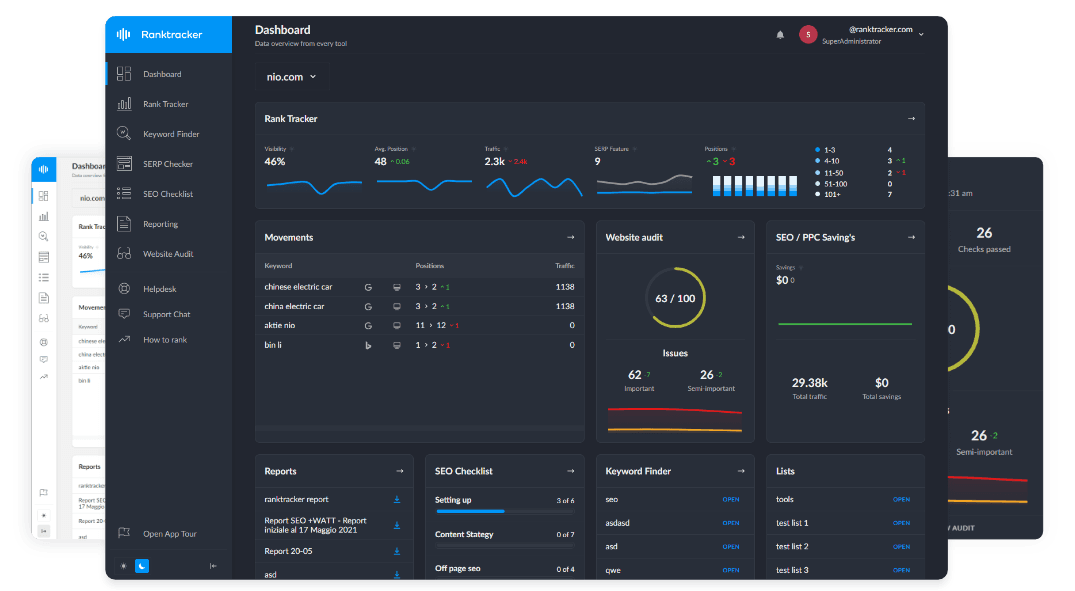Intro
Fodder producers play a vital role in the agricultural ecosystem, supplying high-quality feed to livestock farmers, ranches, co-ops, and animal nutrition brands. Whether you grow traditional hay, silage, or run a hydroponic fodder system, the demand for reliable, nutrient-rich feed is growing—and so is the competition.
Search Engine Optimization (SEO) helps your fodder production business rank in search engines when buyers look for phrases like “bulk alfalfa hay supplier,” “hydroponic fodder near me,” or “barley fodder for dairy farms.” A smart SEO strategy ensures you're not just producing top-quality feed—but also getting discovered by the people who need it.
Why SEO Is Essential for Fodder Producers
Your customers—ranchers, livestock farms, poultry operations, and distributors—are increasingly turning to Google to source quality feed. SEO ensures you appear at the top when they search for local, bulk, or specialty fodder options.
SEO helps your business:
-
Rank for high-intent searches like “bulk silage supplier [state]” or “hydroponic fodder system for cattle”
-
Drive traffic to your product pages, quote forms, or booking options
-
Attract new B2B clients including farms, feedlots, and veterinary suppliers
-
Educate buyers on the nutritional benefits of your feed types
-
Build authority and trust in a competitive, commodity-driven market
Keyword Research That Connects with Livestock Buyers
To attract qualified leads, you need to target keywords that reflect specific feed types, buyer needs, and location.
High-value keyword examples:
-
alfalfa hay supplier near me
-
buy hydroponic fodder for goats
-
barley fodder for dairy cows
-
bulk silage delivery [state/region]
-
green fodder supplier for cattle
-
organic animal feed for sale
-
hydroponic feed for poultry farms
-
grass fodder production [location]
Use Ranktracker’s Keyword Finder to find high-volume, buyer-focused keywords tailored to your region and feed types.
On-Page SEO That Converts Visitors into Customers
Your website should clearly communicate what you grow, who you serve, and how to place an order or request a quote.
On-page SEO essentials:
-
Use keyword-optimized headings (H1, H2, H3) like “Fresh Alfalfa Fodder Delivered in [State]”
-
Write unique meta titles and descriptions for each product or region-specific page
-
Create dedicated pages for each type of fodder (e.g., alfalfa, barley, silage, hydroponic, etc.)
-
Add CTAs like “Request Bulk Pricing,” “Book a Tour,” or “Order Weekly Deliveries”
-
Include key info: feed variety, nutritional content, harvest schedule, delivery zones, packaging sizes
-
Display images of the crop, storage, and delivery process
-
Share testimonials from local farmers and repeat buyers
A well-structured site improves rankings and makes it easy for prospects to take action.
Local SEO to Serve Nearby Farms and Co-ops
Most fodder buyers prefer local or regional suppliers for freshness and lower transport costs. Local SEO helps you dominate regional search results.
Local SEO strategies:
-
Optimize your Google Business Profile with accurate contact info, delivery areas, and photos
-
Use location-specific keywords like “fodder supplier in [County]” or “hydroponic feed [City]”
-
List your business in local farm directories, ag co-op listings, and livestock association websites
-
Include a map and service area description on your Contact page
-
Encourage reviews from customers (especially livestock farmers) on Google and Facebook
This builds local authority and visibility—essential for high-volume, recurring sales.
Content Marketing That Educates and Builds Trust
Farmers want reliable suppliers who understand feed nutrition, quality, and consistency. Publishing educational content helps build authority while attracting organic search traffic.
Blog & content ideas:
-
“Why Hydroponic Fodder Is Gaining Popularity in Cattle Ranching”
-
“Alfalfa vs. Barley Fodder: What’s Best for Your Livestock?”
-
“Fodder Production Calendar: When to Plant and Harvest for Max Yield”
-
“Nutritional Benefits of Fresh Green Fodder for Dairy Cows”
-
“How to Store and Preserve Silage for Long-Term Use”
-
“Custom Fodder Blends for Goats, Sheep, and Poultry”
High-quality blog content helps you rank for long-tail queries and keeps buyers returning to your site.
Visual SEO to Showcase Quality and Processes
Your product is visual—buyers want to see the freshness, cleanliness, and storage of your fodder. Visual content boosts trust and search performance.
Visual SEO tips:
-
Use original, high-quality photos of crops, packaging, transport, and farm visits
-
Add alt text like “barley fodder trays for hydroponic dairy farm in [state]”
-
Use SEO-friendly filenames like “fresh-alfalfa-fodder-delivery.jpg”
-
Embed videos showing harvests, processing, or interviews with satisfied farmers
-
Include before/after livestock photos showing improved condition from your feed
Great visuals convert window-shoppers into loyal customers—and help you rank in Google Image Search.
Build Backlinks to Boost Rankings and Authority
Relevant backlinks tell Google your site is trustworthy and respected in the agriculture space.
Backlink opportunities:
-
Listings in feed supplier directories or hydroponic associations
-
Guest posts on livestock blogs or ag extension sites
-
Cross-promotion with local dairy farms, ranches, or ag equipment suppliers
-
Sponsorships or partnerships with local co-ops and ag expos
-
Press features in sustainable agriculture or farm innovation publications
Use Ranktracker’s Backlink Checker to track your progress and find new outreach targets.
Track SEO Performance and Optimize Over Time
The feed market is seasonal, and your SEO should adapt with planting, harvesting, and buying cycles.
Use Ranktracker to:
-
Monitor keyword rankings for product and location-specific terms
-
Audit your site for mobile speed, usability, and SEO gaps
-
See which pages drive the most leads, form fills, and inquiries
-
Plan campaigns around seasonal peaks (e.g., pre-calving season, dry season feed planning)
-
Update content and inventory listings in real time to reflect availability
Continuous SEO improvements keep your site visible—and your production pipeline full.
Final Thoughts
Fodder production SEO helps you grow more than feed—it grows trust, visibility, and consistent business. Whether you specialize in silage, hydroponic fodder, alfalfa, or custom blends, optimizing your online presence ensures that the farmers and feed buyers who need you can find you.
By targeting the right keywords, structuring your site for conversion, publishing educational content, and ranking locally, your fodder business becomes more than a supplier—it becomes a go-to solution in the ag community.

